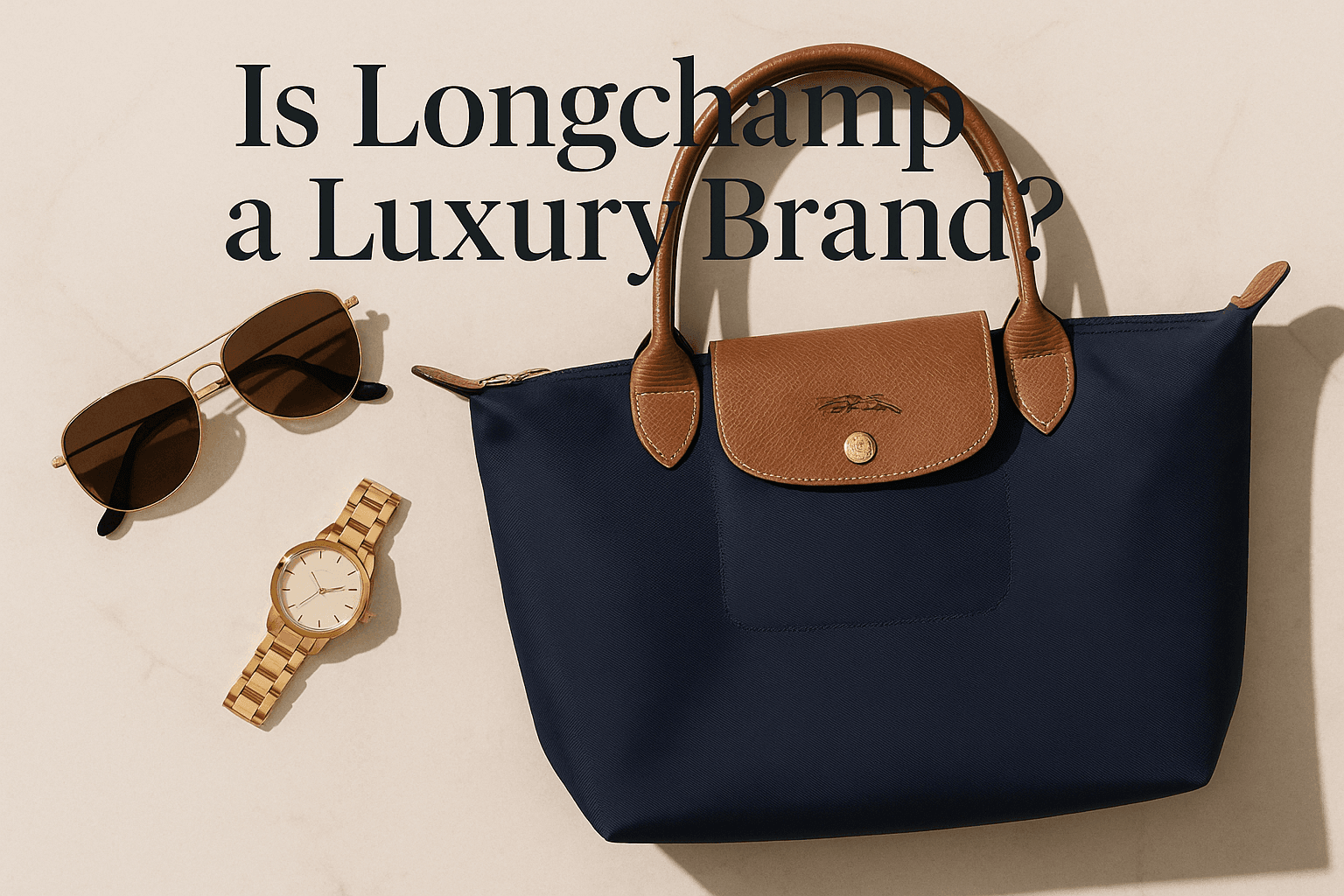Is Longchamp a Luxury Brand?
A deep dive into the beloved French brand’s status, from the iconic Le Pliage to its leather collections, and where it truly stands in the fashion hierarchy.

Walk through any major city, from Paris to New York to Tokyo, and you will inevitably see it: the unmistakable silhouette of a Longchamp Le Pliage tote. Carried by students, professionals, and even royalty like Kate Middleton, its ubiquity raises a fascinating question in the world of fashion: Is Longchamp truly a luxury brand?
The answer isn’t a simple yes or no. Longchamp doesn’t occupy the same rarefied air as “aspirational” luxury houses like Hermès or Chanel, where handbags command five-figure price tags and are often subject to waitlists. Instead, Longchamp has masterfully carved out its own territory, becoming the global standard-bearer for a category known as **accessible luxury**.
To understand its status, we must analyze Longchamp against the core pillars that define a luxury brand: heritage, craftsmanship, materials, price point, and brand perception. It’s in the balance of these factors that Longchamp’s unique and powerful position is revealed.
The Verdict at a Glance
Longchamp is the epitome of accessible luxury. It leverages its rich French heritage and commitment to quality craftsmanship to offer products at a price point that provides an entry into the world of luxury without the extreme exclusivity of top-tier brands.
Analyzing Longchamp Through the Lens of Luxury
Let’s break down the brand’s DNA against the established markers of the luxury market. This methodical approach provides a clear, evidence-based view of its standing.
1. Heritage & History
Founded in Paris in 1948 by Jean Cassegrain, Longchamp has a rich family-owned history—a key trait of many European luxury houses. It began by creating the world’s first luxury leather-covered pipes before expanding into small leather goods and, eventually, handbags in 1971. This seventy-plus-year heritage, continuously managed by the Cassegrain family, gives the brand an authentic story and legitimacy that newer brands cannot replicate. This is a strong check in the “luxury” column.
2. Craftsmanship & Quality
While the nylon Le Pliage is its most famous product, Longchamp maintains its own ateliers in France and prides itself on its leatherworking expertise. The brand’s signature “Cuir de Russie” or Russian Leather—a durable, textured cowhide used for the flaps and handles of the Le Pliage—is a mark of quality. Even the assembly of the nylon totes involves a precise, multi-step process inspired by origami. For its full-leather bags, the craftsmanship is even more apparent. This commitment to quality production firmly aligns with luxury values.
3. Materials & Innovation
Here, the distinction becomes clear. The iconic Le Pliage is crafted from a lightweight yet durable polyamide canvas (nylon). While high-quality, nylon is not traditionally considered a “noble” material like the full-grain leathers used by top-tier brands. However, Longchamp’s innovation—creating a foldable, durable, stylish bag from this material—is what made it a phenomenon. Their full-leather lines use excellent quality cowhide and calfskin, but the brand’s identity is inextricably linked to nylon, which positions it differently from brands that work exclusively with the rarest leathers.
4. Exclusivity & Perception
Exclusivity is a cornerstone of high luxury. The difficulty in acquiring a Chanel Classic Flap or a Hermès Birkin is part of their allure. Longchamp operates on a different model. The Le Pliage is intentionally accessible and widely available. You can walk into any Longchamp boutique or department store and purchase one. This democratic approach is a deliberate strategic choice that sacrifices exclusivity for volume and broad appeal. It’s seen on everyone, which makes it relatable and practical, but not exclusive.
Interactive Brand Comparator
See how Longchamp stacks up against others. Select two brands to compare them on key luxury metrics.
The Price Point: The Defining Factor
Ultimately, the most significant element defining Longchamp’s position is its price. A classic Large Le Pliage tote retails for around $150-$200. This is a considered purchase, but it is orders of magnitude less than a comparable tote from a high-luxury brand.
- Longchamp Le Pliage Tote: ~$155
- Coach Canvas Tote: ~$250 – $350
- Louis Vuitton Neverfull: ~$2,000+
- Goyard St. Louis Tote: ~$1,800+
- Chanel Deauville Tote: ~$5,000+
This pricing strategy places Longchamp squarely in the “accessible luxury” field alongside competitors like Coach, Kate Spade, and Michael Kors. It acts as a gateway for consumers who appreciate quality and heritage but are not yet able or willing to enter the astronomical price points of aspirational luxury. It’s the “my first nice bag” for many, and a reliable, practical workhorse for those who own more expensive pieces.
Conclusion: The Smart Woman’s Luxury
So, is Longchamp a luxury brand? The definitive answer is yes, but with a crucial qualifier: it is the global leader in **accessible luxury**. It doesn’t compete on the same plane of exclusivity or material rarity as Hermès, but it isn’t a mass-market or fast-fashion brand either.
Longchamp’s genius lies in its democratic approach. It has taken its legitimate French heritage and leatherworking DNA and applied them to a product that is practical, stylish, and attainable. Owning a Longchamp bag isn’t about broadcasting immense wealth; it’s about signaling an appreciation for timeless design, quality, and Parisian chic. It’s a choice that says you are in the know—you’ve chosen a piece with history and function over fleeting trends or overt logos. In that sense, Longchamp represents a modern, intelligent, and highly successful form of luxury.
